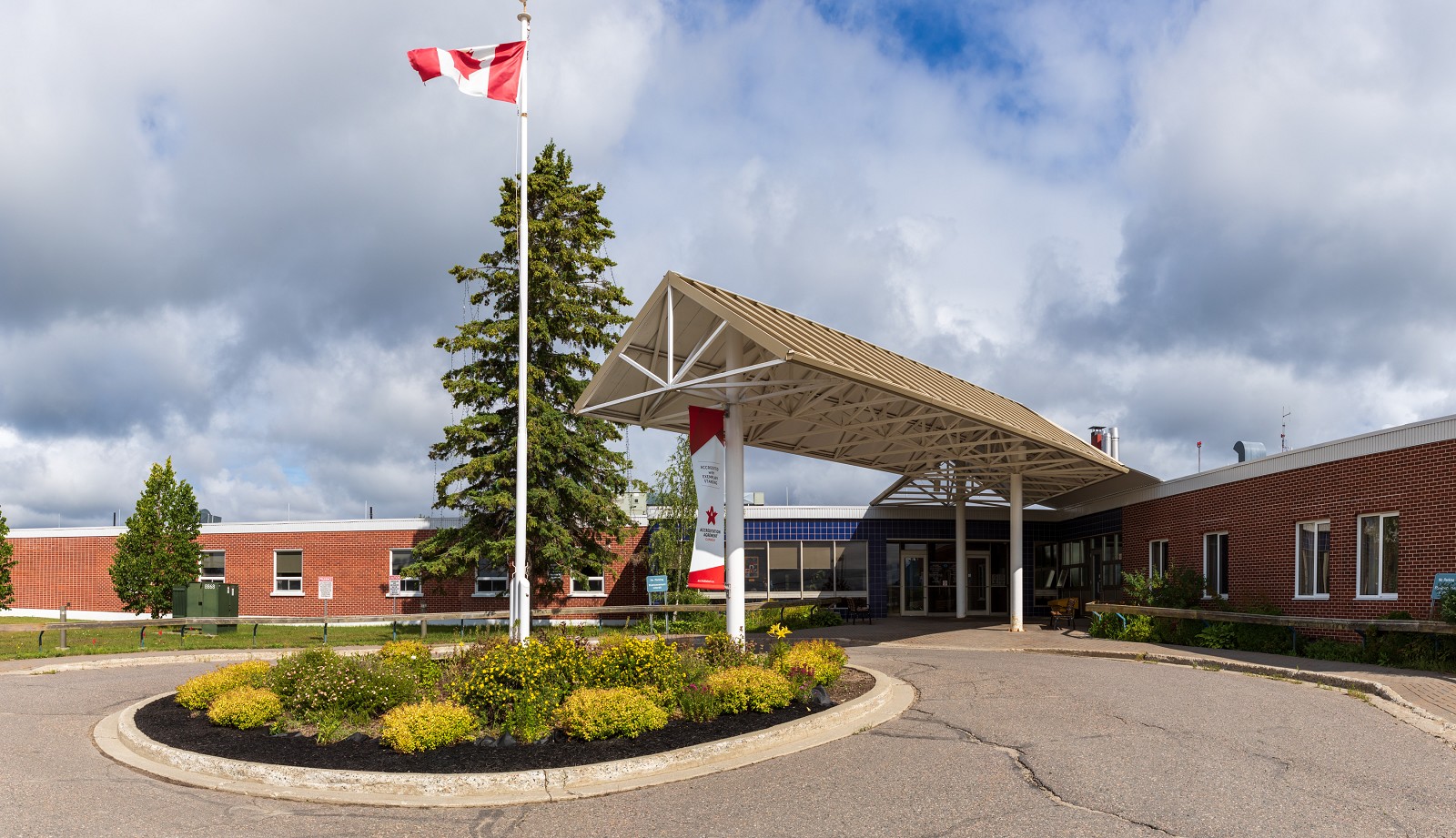
50 Years 1963 - 2013 The Past, Present & Future
On Wednesday, July 10, 1963, Hospital Board members, the Government of Ontario officials, municipal officers, physicians, auxiliary members, Hospital staff and the public celebrated the grand opening of the Geraldton District Hospital.
This year, on Wednesday, July 10, 2013, there will be more celebrations. Further news releases will provide the details of the planned celebrations.
The following is information about significant events leading to the present Hospital and future plans for the Hospital.
The Past
In the early 1930’s, the first hospital in the area was established by Little Long Lac Gold Mines Limited. The Little Longlac Hospital had 23 beds. It was located on the mine site at the corner of Rosedale Point Road and Highway 854.
In 1939, five local mines formed a hospital association and incorporated the Little Longlac Hospital. The first Board of Directors was comprised of the managers of the five gold mines (Little Long Lac Gold Mines, MacLeod-Cockshutt Gold Mines, Bankfield Gold Mines, Tombill Gold Mines/Magnet Consolidated Mine and Hardrock Gold Mines).
In 1952 the Little Longlac Hospital was changed from a private hospital to a public hospital.
In the late 1950’s, plans were initiated to construct a new hospital centrally located in the town of Geraldton.
In 1962 the name of the hospital was changed to Geraldton District Hospital.
In 1963 the new 34-bed hospital opened on the current site, located at 500 Hogarth Avenue West.
In 1964 the Nurses Residence was opened, adjacent to the Hospital. This helped with the recruitment of new nursing staff.
In 1988, an additional long-term care wing, the John Owen Evans Residence, was constructed. The total bed complement changed to 60 beds, consisting of 24 acute, 5 obstetric, 5 pediatric and 26 long-term care beds.
Also, the Laboratory, Plant Operations Department, Stores and Administration office and a new Rehabilitation Department were relocated directly below the Residence.
In 1990 the Nurses Residence was refurbished and named the Bessie P. Newman Residence. The residence was then used by all health professionals and students.
In 2000, the Hospital opened the Northern Horizon Health Centre situated on the west side of the property. Centralizing the services of the Geraldton Medical Group, the Dental Office, Thunder Bay District Health Unit, Diabetes Education/Nutrition, and Community Care Access Centre, under one roof, improved accessibility for the Community.
Also, the Hospital underwent improvements to the acute care wing and the John Owen Evans Residence. Once again the total bed complement changed to 49 beds, consisting of 18 acute, 1 obstetric, 3 pediatric, 1 palliative care and 26 long-term care beds. With the addition of the new birthing suite located on the acute care unit, the former obstetrical unit was utilized to accommodate the Telemedicine studio, Employee Health Services and Infection Control, Continuous Quality Improvement Coordinator, Finance, Anishnabe Resource Worker and Recreation offices.
In 2002 and 2005, major renovations to the emergency department and support areas (ie: laundry, kitchen, cafeteria and boardroom) occurred. This also included a new drive-through drop-off and pick up ambulance bay.
In 2008 the Northern Horizon Health Centre was expanded to accommodate the Greenstone Family Health Team.
The Present
The Geraldton District Hospital is a fully accredited hospital. The Hospital continues to collaborate with local, district and regional partners to help ensure appropriate services are provided in the hospital and community for the benefit of all patients.
Recruitment of health professionals and the delivery of safe quality services are high priorities.
The Hospital is financially balanced in regards to day-to-day costs. Regardless, efficiencies are continuously monitored to help ensure future sustainability.
The Future
The Geraldton District Hospital is in the middle of a 7-year plan to upgrade heating, ventilation, air conditioning, electrical, plumbing and roofing to help ensure a comfortable and safe environment for patients and staff.
The Hospital continues to lobby the Ministry of Health and Long-Term Care in order to obtain approval to relocate the Emergency Department from the lower level to the main level, adjacent to the Acute Care Unit. The new Emergency Department would be somewhat larger in order to accommodate not only more patients, but also more equipment. Patient flow would be improved and infection control practices would be maximized. Finally, additional space under the new Emergency Department would be available for other health care providers, thus improving accessibility of services to the community.
The proposed relocation of the Emergency Department would involve an expansion of the Hospital at an estimated cost of $9.9 million. The Ministry normally funds 90% of such projects (when approved) and the Hospital funds the remaining 10%. Geraldton District Hospital already has its 10%, thus alleviating the need for fundraising within the community.
The Ministry of Health and Long-Term Care and the North West Local Health Integration Network (LHIN) are in the process of planning the transformation of the health care system.
Within the next few years, local health care hubs will be developed. This will be followed by the formation of district networks throughout Northwestern Ontario, and finally a regional network, all within 10 years.
Geraldton District Hospital, as well as other local health service providers will be working closely with the North West LHIN regarding transformation in this area.
Should any individual or group wish to receive information about any of the above information, then please do not hesitate to contact Kurt Pristanski at kpristanski@geraldtondh.com.
Also, more hospital information can be found on the Geraldton District Hospital website; www.geraldtondh.com.
Si vous désirez recevoir ce communiqué en français, veuillez appeler le 854-4102.